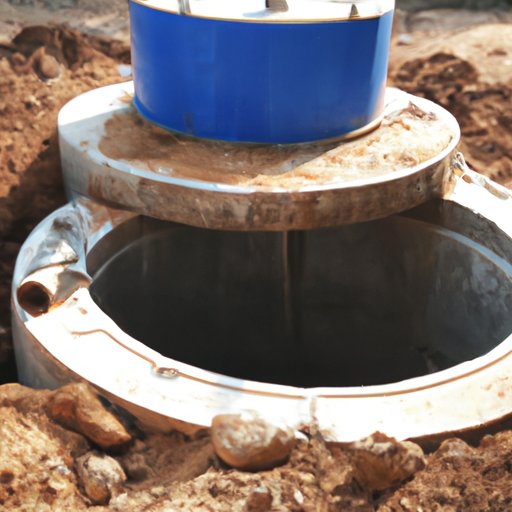Exploring the Basics: How Does a Septic Tank Work?
Septic tanks are an essential part of any home’s plumbing system. Understanding how they work and how to properly maintain them can help ensure that your home’s wastewater processing system runs smoothly and safely. In this article, we’ll explore the basics of septic tanks and provide a step-by-step guide to understanding how they work.
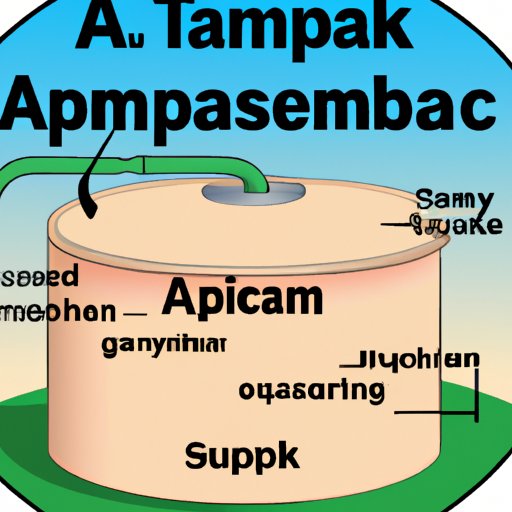
A. Definition of a Septic Tank
A septic tank is an underground chamber made of concrete, fiberglass or plastic that collects and processes wastewater from toilets, sinks, showers, and other appliances in a home. The tank is connected to a network of pipes and drains that transport wastewater away from the home. As wastewater enters the tank, it is separated into three layers: solids, liquids and scum. The solids settle to the bottom of the tank, while the liquids and scum float to the top.
B. Types of Septic Tanks
Septic tanks come in a variety of sizes and materials. Homeowners usually choose between concrete, fiberglass and plastic tanks. Concrete tanks are the most common and durable, but they can be expensive and difficult to install. Fiberglass tanks are lightweight and easy to install, but they may not last as long as concrete tanks. Plastic tanks are the least expensive option, but they may need to be replaced more often than the other two types.
C. Components of a Septic Tank System
In addition to the septic tank itself, there are several other components of a septic tank system. These include a distribution box, drain field, risers, filters and pumps. The distribution box divides the wastewater evenly among the drain lines. The drain field is a series of perforated pipes that allow the wastewater to slowly seep into the soil. Risers are used to bring the tank above ground level for easier inspection and maintenance. Filters and pumps help to keep the system running efficiently by preventing solids from entering the drain field.
II. A Step-by-Step Guide to Understanding Septic Tanks
Now that you understand the basics of septic tanks, let’s take a closer look at how they work. Here’s a step-by-step guide to understanding how wastewater is processed in a septic tank.
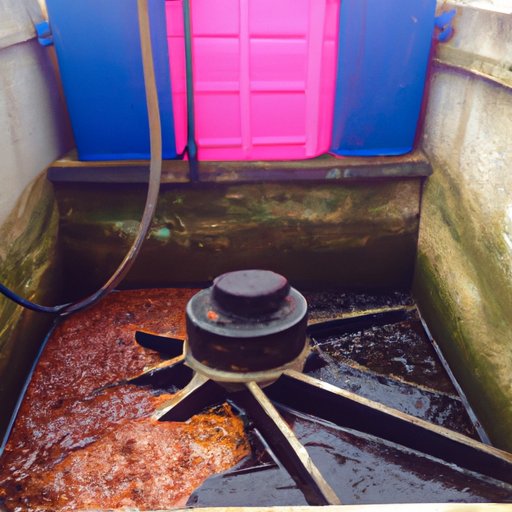
A. How Wastewater is Processed in a Septic Tank
When wastewater enters the tank, it is divided into three layers: solids, liquids and scum. The solids settle to the bottom of the tank, while the liquids and scum float to the top. Bacteria in the tank break down the solids, which eventually form a layer of sludge on the bottom of the tank. The liquids and scum are then discharged into the drain field, where they are treated naturally by the soil.
B. How a Septic Tank Works
A properly functioning septic tank works like this: wastewater enters the tank and is broken down by bacteria. The solids settle to the bottom of the tank, while the liquids and scum float to the top. The liquids and scum are then discharged into the drain field, where they are treated naturally by the soil. Any remaining solids are pumped out of the tank periodically to prevent the tank from becoming clogged or overflowing.
III. An Overview of Septic Tank Maintenance and Installation
Maintaining and installing a septic tank system can be a complicated process. Here’s an overview of what you need to know before installing a septic tank system.
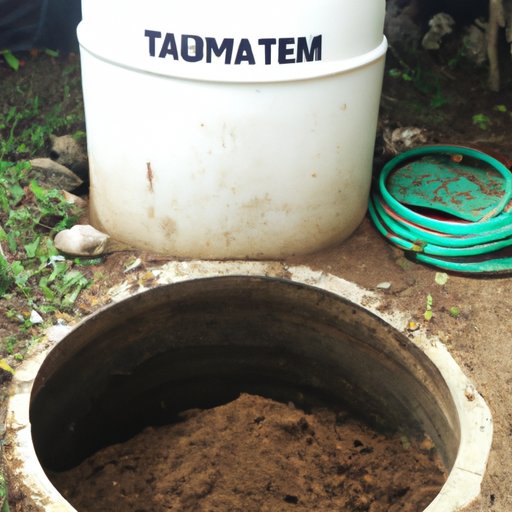
A. The Benefits of Installing a Septic Tank System
Installing a septic tank system offers a number of benefits. First, it can save you money on sewer bills. Second, it can reduce your environmental impact by reducing the amount of waste that enters the water supply. Finally, it can increase the value of your property.
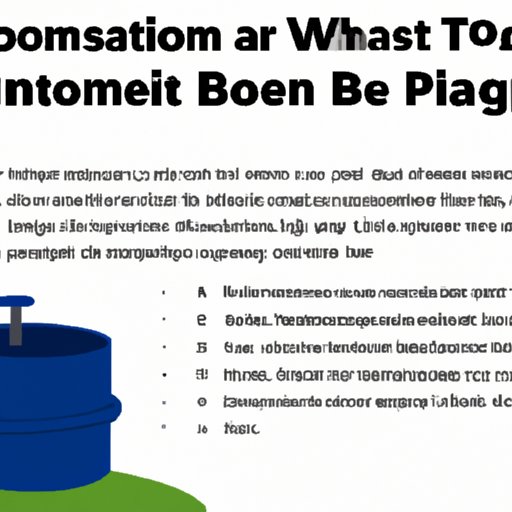
B. Common Questions About Septic Tank Care and Maintenance
Proper care and maintenance of a septic tank system is essential for its longevity and efficiency. Here are some common questions about septic tank care and maintenance: How often should I have my septic tank inspected? Should I use additives in my septic tank? How often should I pump out my septic tank? Can I do septic tank maintenance myself?
IV. What You Need to Know Before Installing a Septic Tank
Before installing a septic tank, there are a few things you need to consider. First, you’ll need to choose the right type of tank for your needs. Second, you’ll need to make sure the location of the tank is suitable. Finally, you’ll need to familiarize yourself with local permits and regulations for installing a septic tank.
A. Choosing a Septic Tank
The first step in installing a septic tank is choosing the right type of tank for your needs. Concrete tanks are the most common and durable, but they can be expensive and difficult to install. Fiberglass tanks are lightweight and easy to install, but they may not last as long as concrete tanks. Plastic tanks are the least expensive option, but they may need to be replaced more often than the other two types.
B. Proper Location for a Septic Tank
The location of the septic tank is also important. The tank must be located at least 10 feet away from buildings and water sources, and must be elevated so that the wastewater flows downhill. It’s also important to make sure the tank is located in an area with good drainage, as standing water can cause problems with the tank.

C. Permits and Regulations for Installing a Septic Tank
Finally, you’ll need to familiarize yourself with local permits and regulations for installing a septic tank. This will vary depending on your location, so it’s important to check with your local government for specific requirements. Generally speaking, you’ll need to submit a permit application, obtain a permit and follow all applicable rules and regulations.
V. Understanding Your Septic Tank System: A Comprehensive Guide
Once you’ve installed your septic tank system, it’s important to understand how it works and how to properly maintain it. Here’s a comprehensive guide to understanding your septic tank system.
A. Types of Septic Systems
There are several different types of septic systems, including conventional systems, aerobic systems, and advanced treatment systems. Conventional systems are the most common, and involve a septic tank and drain field. Aerobic systems use a pump to oxygenate the wastewater, and require regular maintenance. Advanced treatment systems use additional treatments such as filtration and disinfection to further treat the wastewater.
B. Components of a Septic System
In addition to the septic tank, there are several other components of a septic system. These include a distribution box, drain field, risers, filters and pumps. The distribution box divides the wastewater evenly among the drain lines. The drain field is a series of perforated pipes that allow the wastewater to slowly seep into the soil. Risers are used to bring the tank above ground level for easier inspection and maintenance. Filters and pumps help to keep the system running efficiently by preventing solids from entering the drain field.
C. Septic System Maintenance
Regular maintenance is essential for keeping your septic system running smoothly and efficiently. This includes having your tank inspected and pumped out every three to five years, maintaining the drain field, and repairing any leaks or damage. Additionally, it’s important to limit the amount of water entering the system and avoid putting anything other than human waste and toilet paper into the tank.
By understanding the basics of septic tanks and how they work, you can ensure that your home’s wastewater processing system runs smoothly and safely. With the right knowledge and proper maintenance, you can enjoy the benefits of a septic tank system for many years to come.
(Note: Is this article not meeting your expectations? Do you have knowledge or insights to share? Unlock new opportunities and expand your reach by joining our authors team. Click Registration to join us and share your expertise with our readers.)
